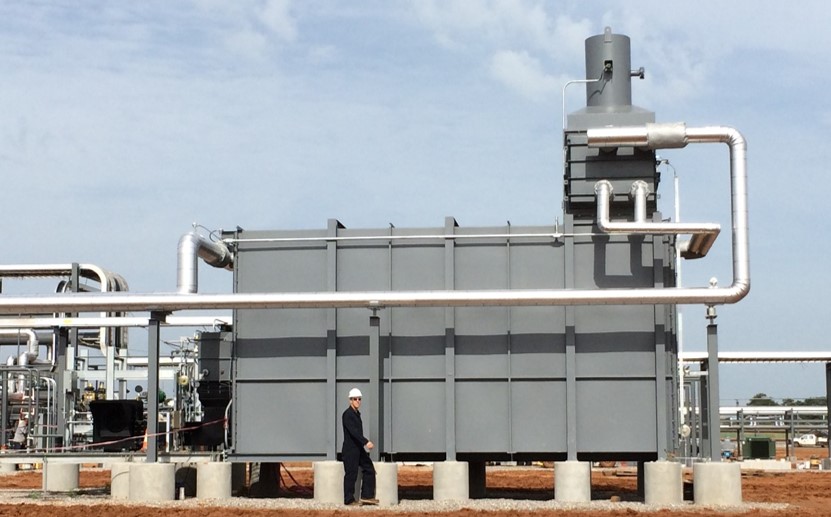Direct fired heaters can be used in any number of different applications. One of the most common uses for a fired heater is to heat oil (or thermal fluids). Hot oil heaters, sometimes called thermal fluid heaters or heat medium heaters, are used in a variety of situations depending on the industry in which they are used. Some industrial applications will use heated fluids to warm baths or kettles, presses, or even some types of ovens. In larger applications, like in the oil and gas industry, hot oil heaters are used in combination with heat exchangers to warm up a secondary fluid - which could be gas or liquid.
An analogy may help here. Maybe you have been in a home that has heated floors, or maybe you have them in your own house (don’t brag). Many times this is accomplished by heating water and then sending the heated water through piping in the floors to indirectly heat the top surface of the floor.
You are probably asking, “Why don’t you just heat the secondary fluid directly, so you don’t need both the heater and the exchanger?” And that is not a bad question. Sometimes it makes sense to heat the secondary fluid directly, but other times it may not. Let’s take a look at a couple of the reasons why it may make sense to use a hot oil heater in a system.
1. If you have a secondary fluid with low temperature limits
Amine is commonly used in gas processing plants and other applications to help remove H2S and CO2 from gases. The downside to amine is that it begins to degrade rapidly when portions of the fluid reach 350°F or higher. Using a direct fired heater as the heat source in this case is difficult because the film temperature of the amine can easily surpass the 350°F limit. In cases like this using a specialty heat transfer fluid (or hot oil) is a clear solution.
By picking a heat transfer fluid with a higher maximum film temperature – maybe 600°F – you can feel comfortable heating it directly in the heater, and using the hot fluid in an exchanger to warm the amine in a more controlled environment that is less prone to temperature variations. Now the amine is happy, the heat transfer fluid is happy, and you are happy because you don’t have maintenance or performance issues.
2. If you need to heat a corrosive fluid
If you constantly pump a corrosive fluid through a heater you can corrode the coils inside the heater, which can result in costly repairs and even tube ruptures. One solution would be to change the metallurgy of the heater coil to stainless steel or something with more corrosion resistance. Because of the length of coil required in a heater, this could be a costly change. Another solution would be to utilize a hot oil heater with an exchanger. The surface area required in the exchanger is typically much smaller than in the heater, requiring less money to change to corrosive resistant materials. Limiting the amount of material exposed to the corrosive fluid reduces equipment and maintenance costs.
3. If you have a secondary fluid that has a tendency to coke
When heated many fluids will lay down deposits on the coils of a heater – commonly called coke. These deposits begin to act like insulation in all the wrong places. It is like putting a sleeping bag over your radiator – it prevents the radiator from heating the house and could result in a catastrophic fire. Using a heat transfer fluid that that can handle the heat and flux from the heater and will not lay down coke can prevent costly maintenance, overheating of tubes, and ultimately tube rupture. As with the scenarios before, this heat transfer fluid can then be used to heat the secondary fluid in a more controlled manner. We see this sometimes in cases where someone needs to heat a heavy fluid like crude oil, which has a tendency to coke when overheated.These are just a few of the reasons why you may want to use a hot oil system instead of directly heating a fluid. As you are designing you next plant or process take these into consideration. If you still have questions, feel free to contact us and we can work with you on the process conditions and recommend possible solutions. Need a hot oil heater for your project? Check out heater and auxiliary equipment options!
Stay tuned to the blog all month as we talk about hot oil heaters and design considerations. We will also be giving away a free tool at the end of the month, so make sure to check it out.
Sign up on the right side to make sure you never miss a post!

